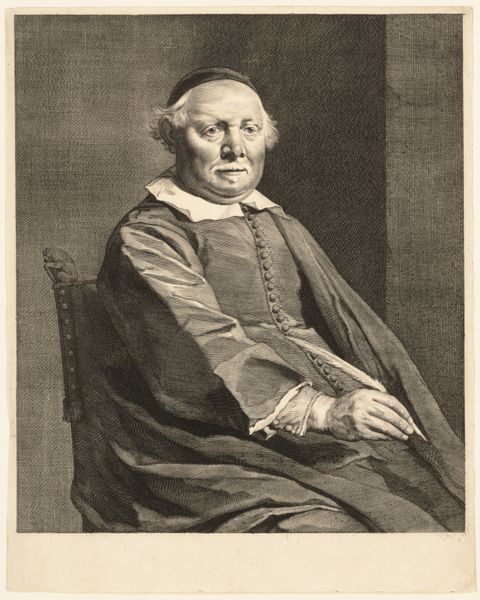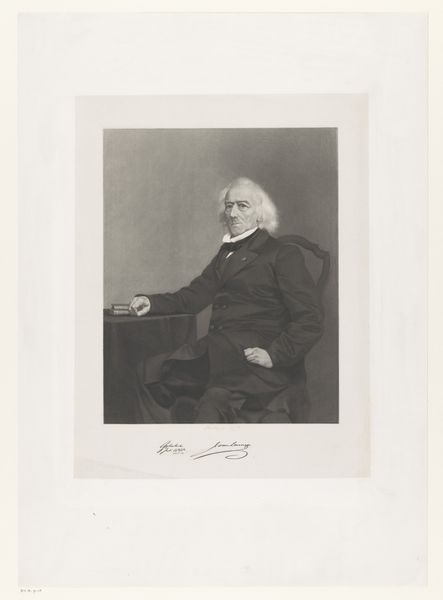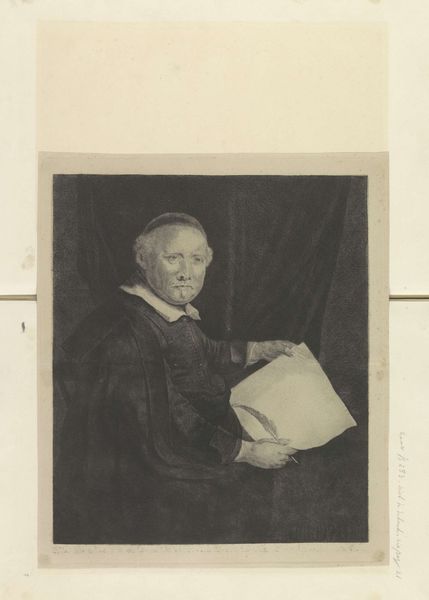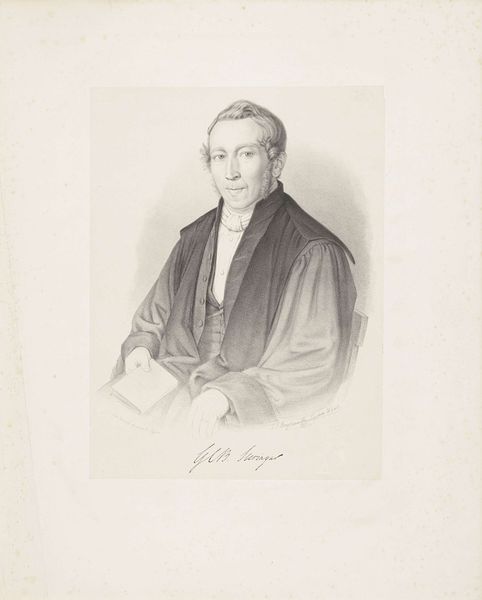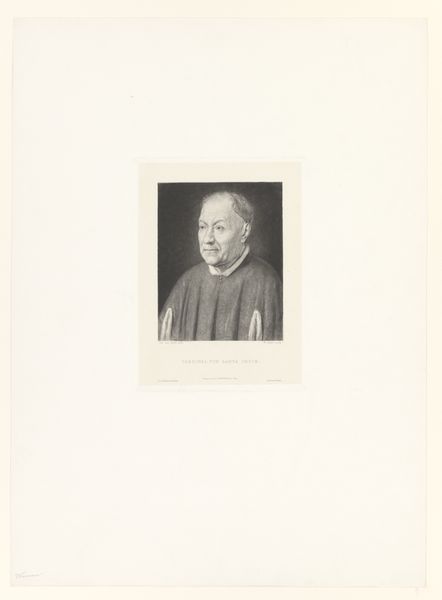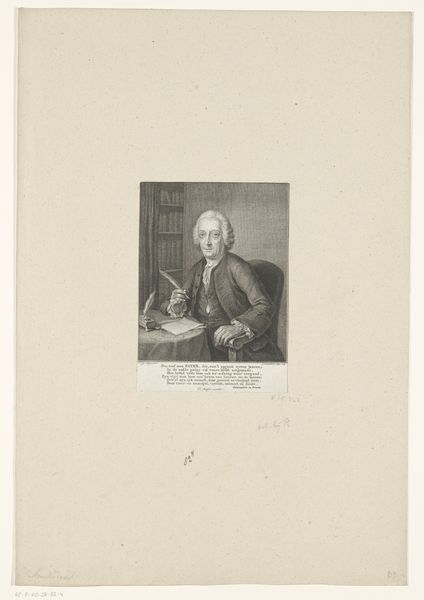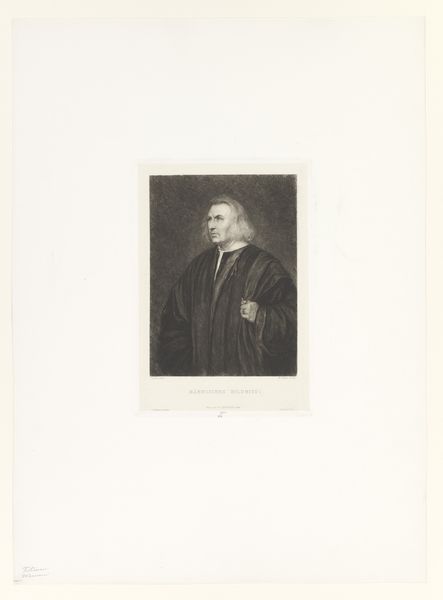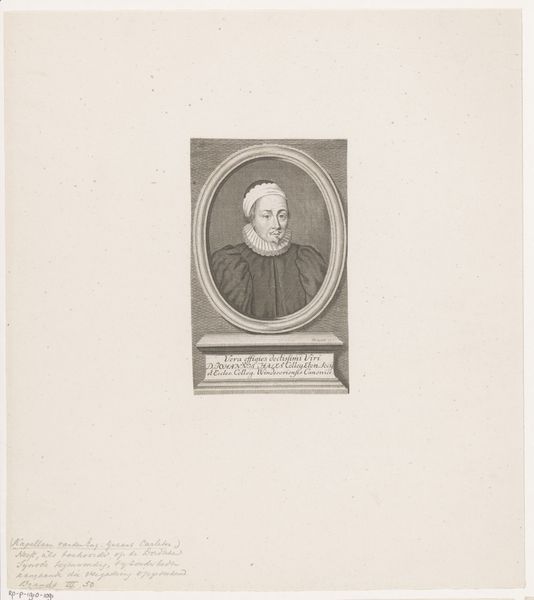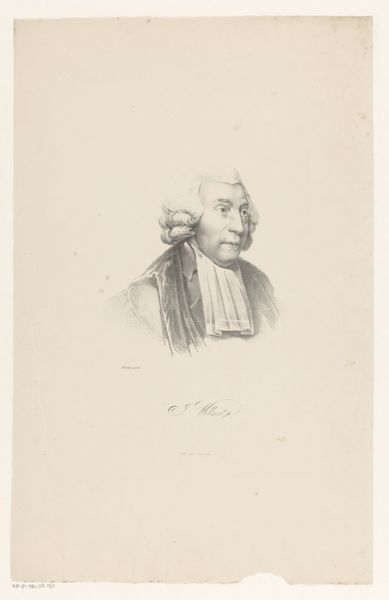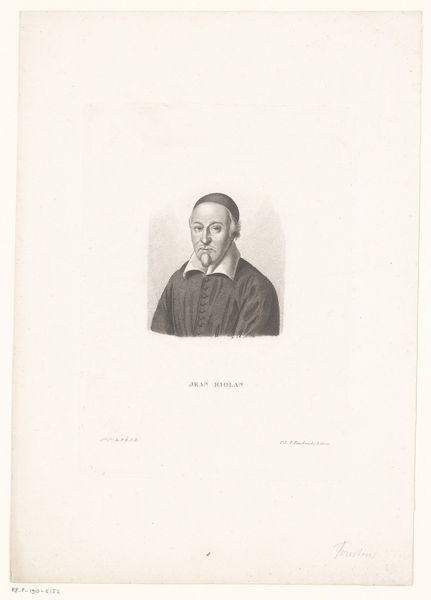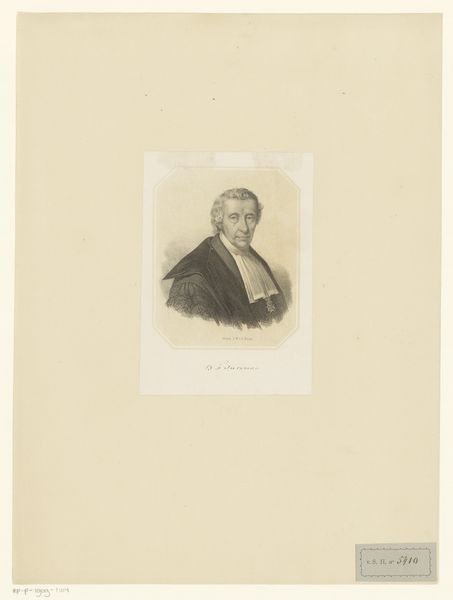
print, etching
#
portrait
# print
#
etching
#
genre-painting
#
realism
Dimensions: height 405 mm, width 254 mm
Copyright: Rijks Museum: Open Domain
Editor: This is George Andries Karsen's "Portret van Lieven Willemsz. van Coppenol" from 1862, an etching printed on paper. It's a very formal, almost severe portrait. What strikes you most about this piece? Curator: The etching itself, its mass reproducibility, is central. The question isn't just 'who' is depicted, but how and for whom. The print democratizes access, circulating images of prominent figures beyond the elite. How does the materiality of the print—the paper, the ink, the very act of etching—mediate our understanding of van Coppenol’s social standing? Editor: I guess it makes him seem more…accessible? Like he’s entering into the lives of ordinary people. Curator: Precisely. Consider the labor involved: the artist, the printer, the distribution networks. Each step leaves its trace. How does this process, in contrast to, say, a unique oil painting, shape our understanding of the subject’s authority? Is it diminished or amplified by its reproduction? Editor: It's interesting to think of it not just as an image, but as a manufactured object with all this embedded work. I never really considered how a print can change someone's status. Curator: Right, we often focus on the final image, not the means of its production and distribution, forgetting the socio-economic factors that gave rise to its creation and proliferation. Reflect on who could afford these prints, and where they were displayed. Were they signs of upward mobility? What does the consumption of these images tell us about 19th century Dutch society? Editor: It really pushes me to consider the bigger picture, that an image is a thing embedded in society and power, and not only someone's skill at depicting likeness. Curator: Exactly. Recognizing the material conditions reveals hidden power dynamics within the art world itself.
Comments
No comments
Be the first to comment and join the conversation on the ultimate creative platform.
